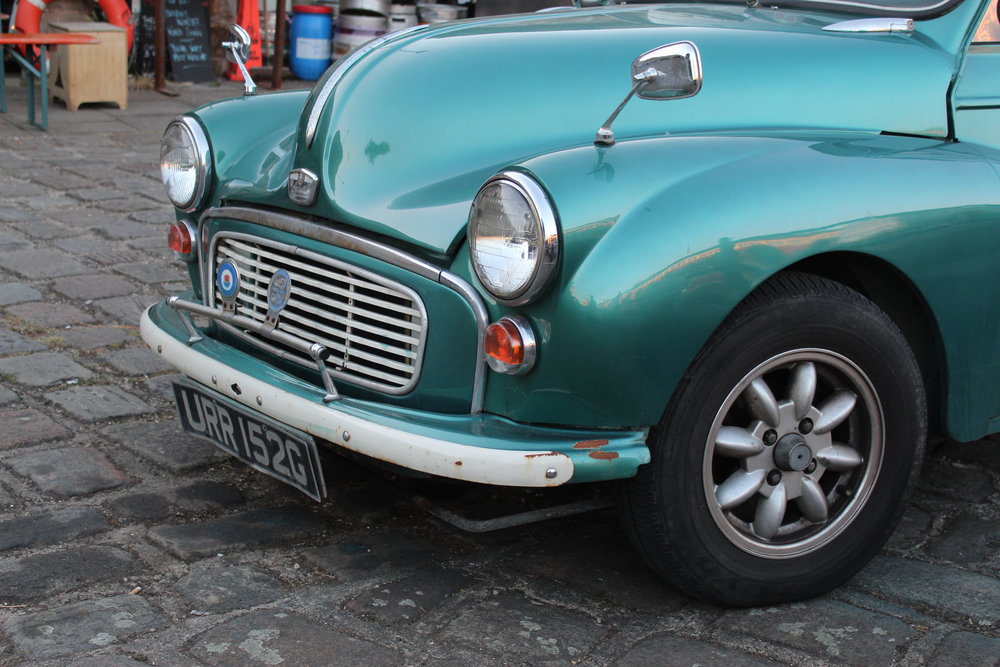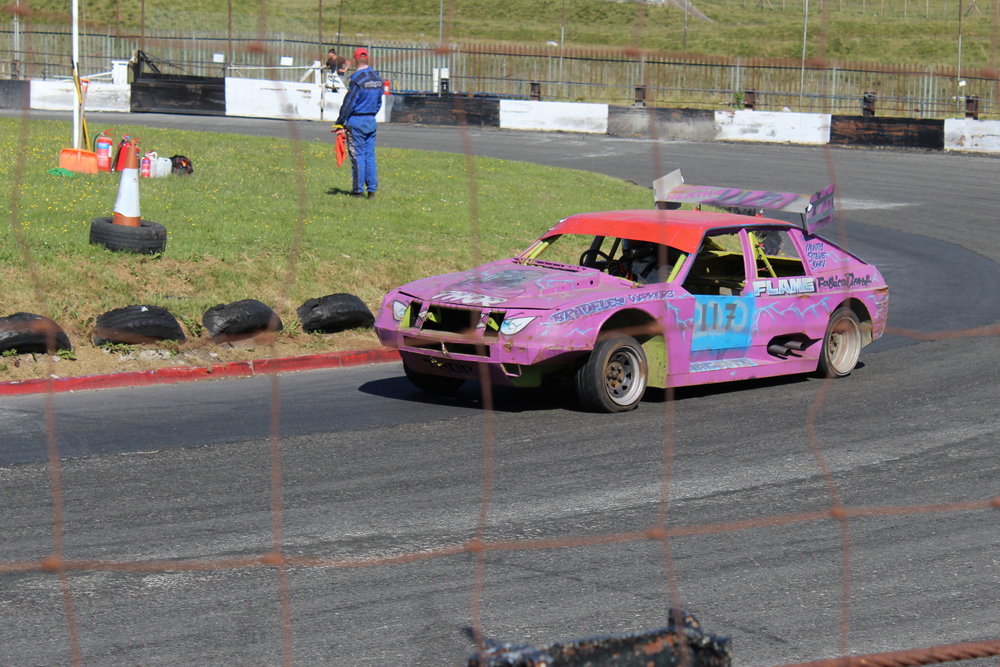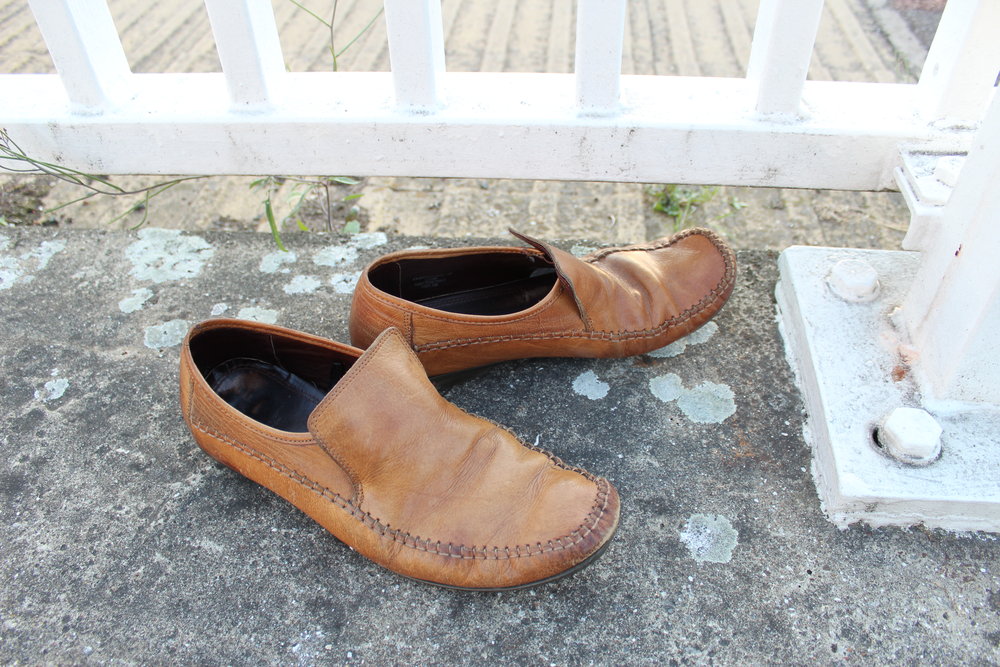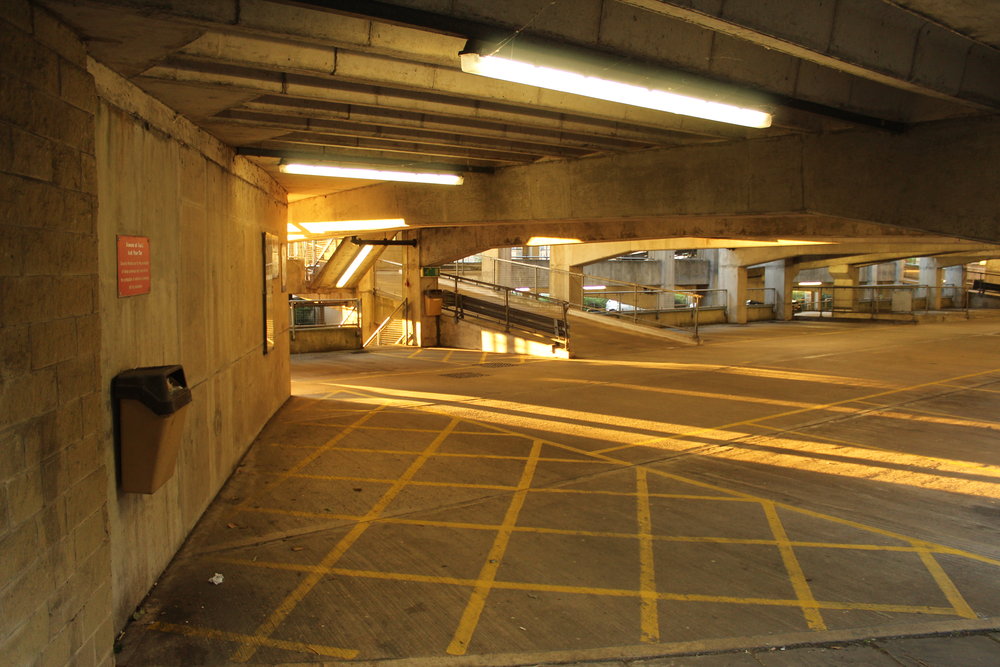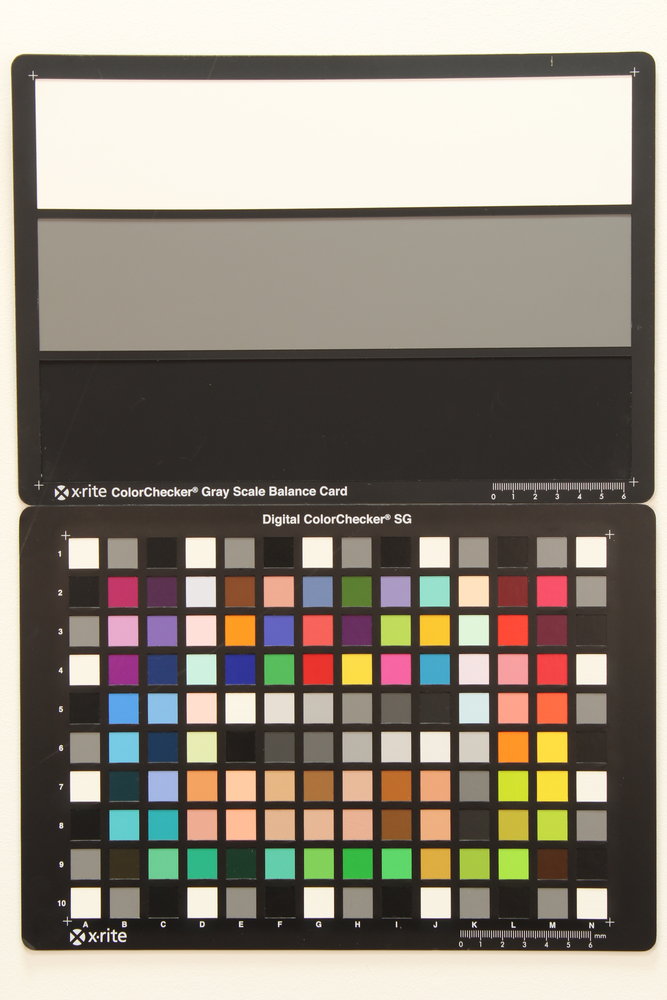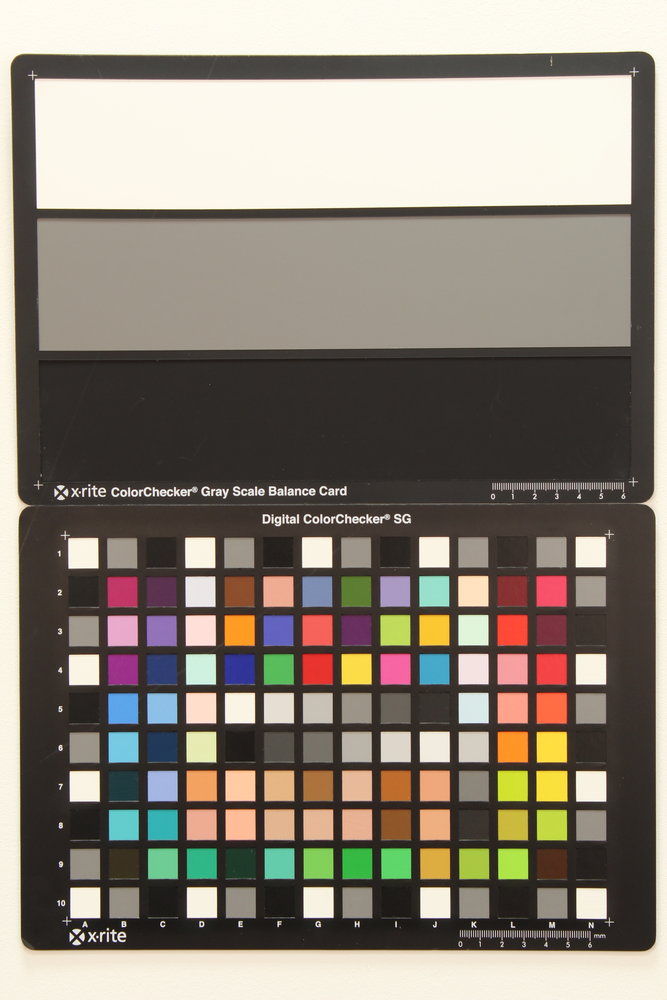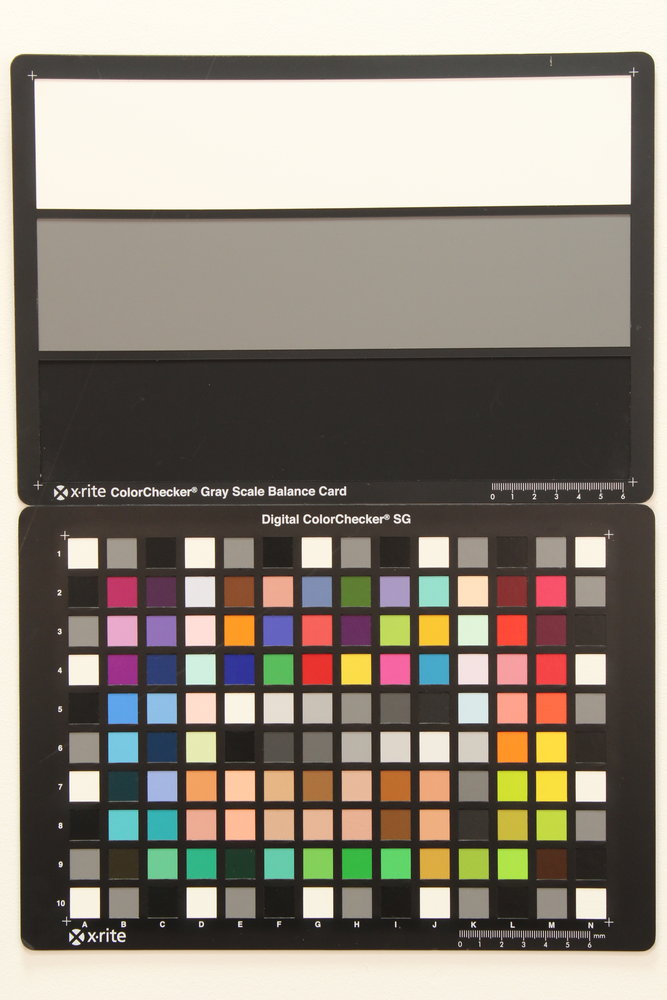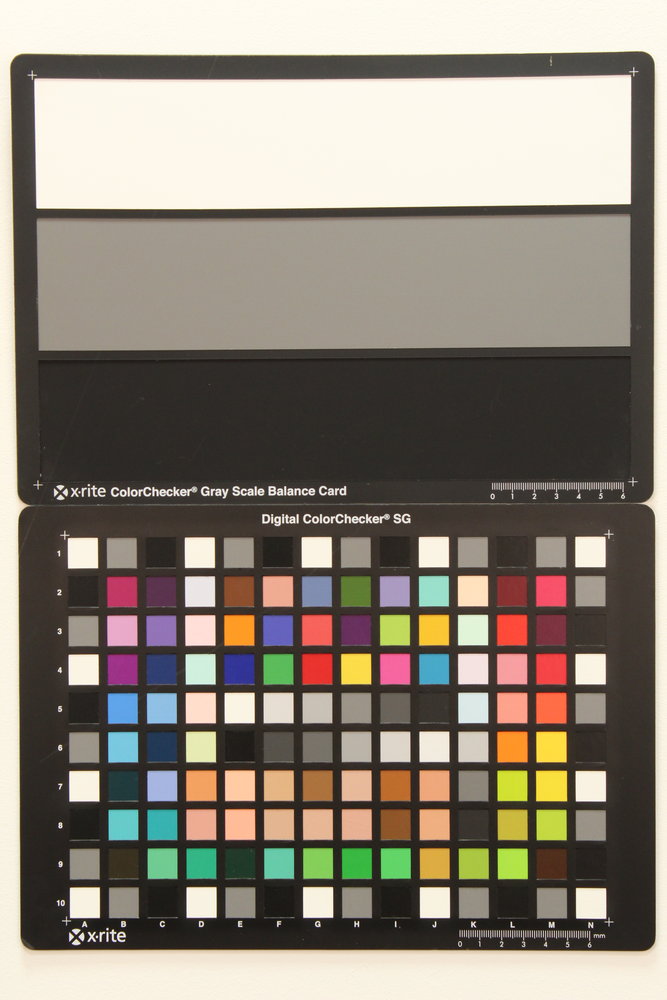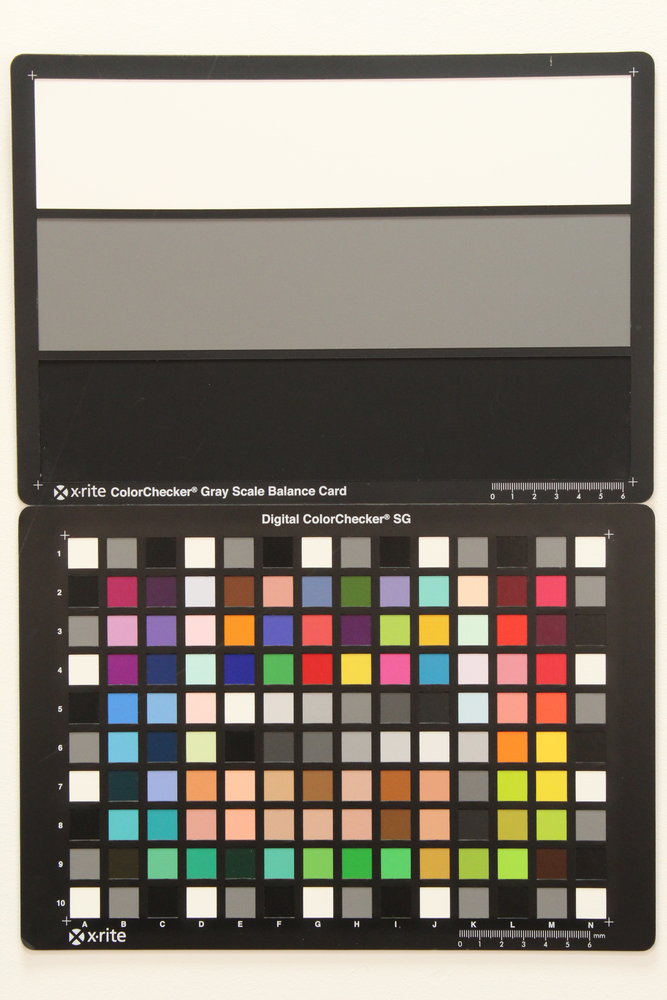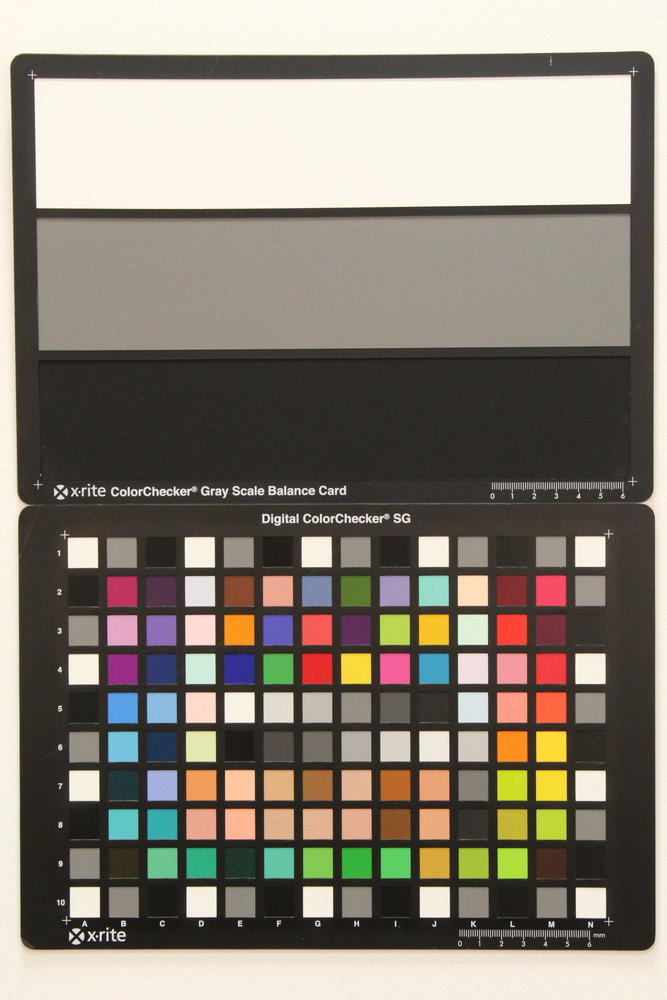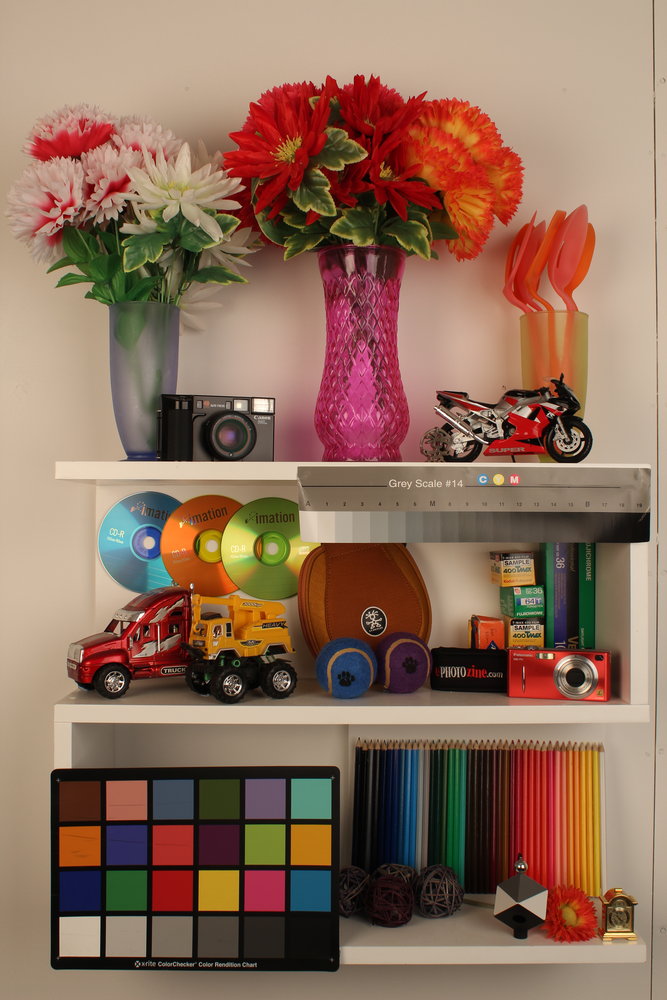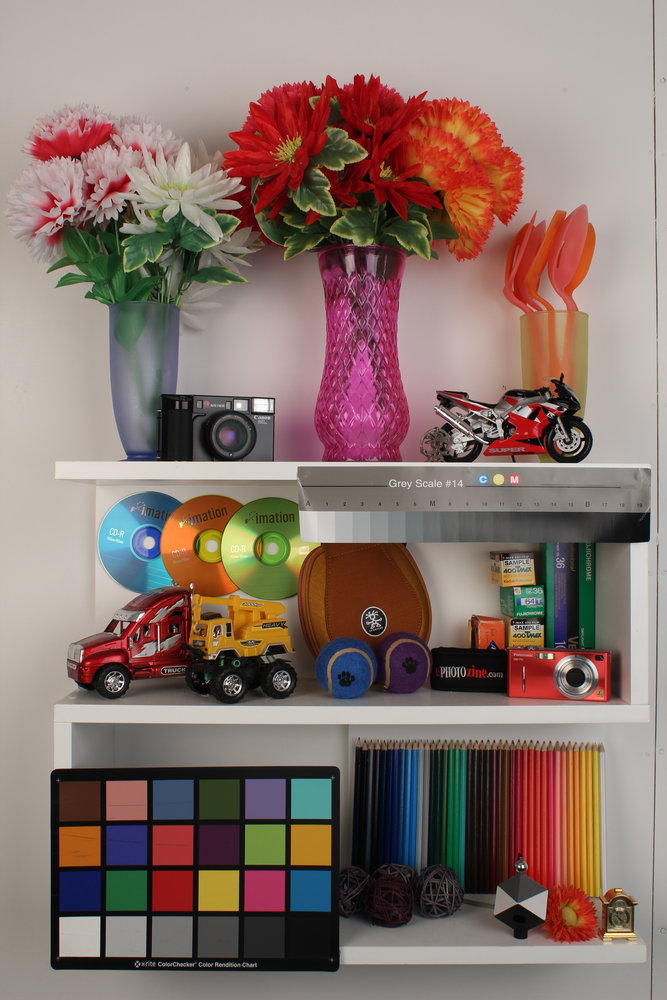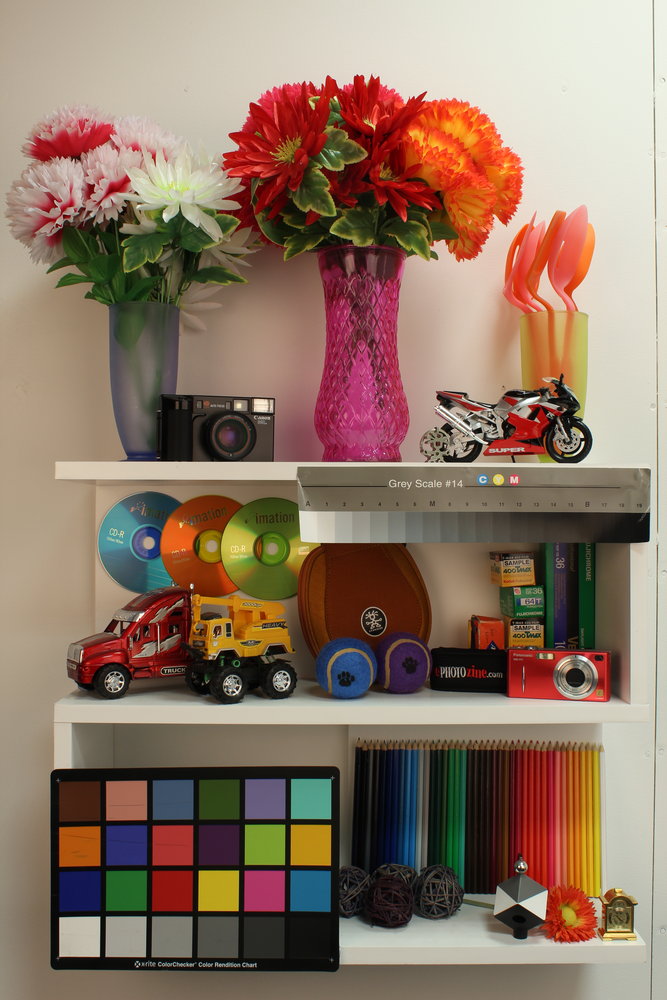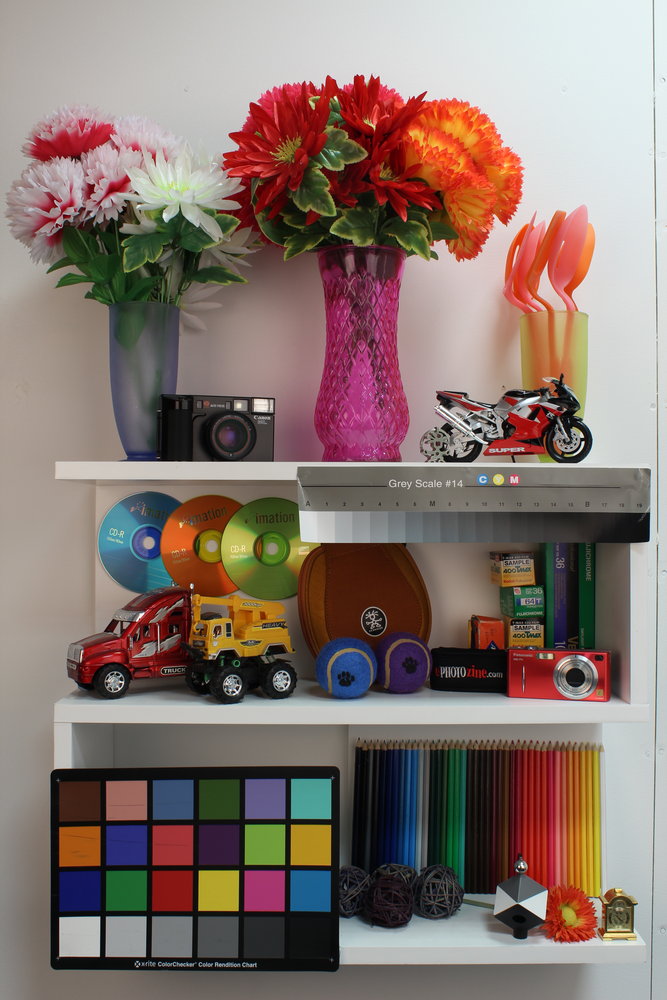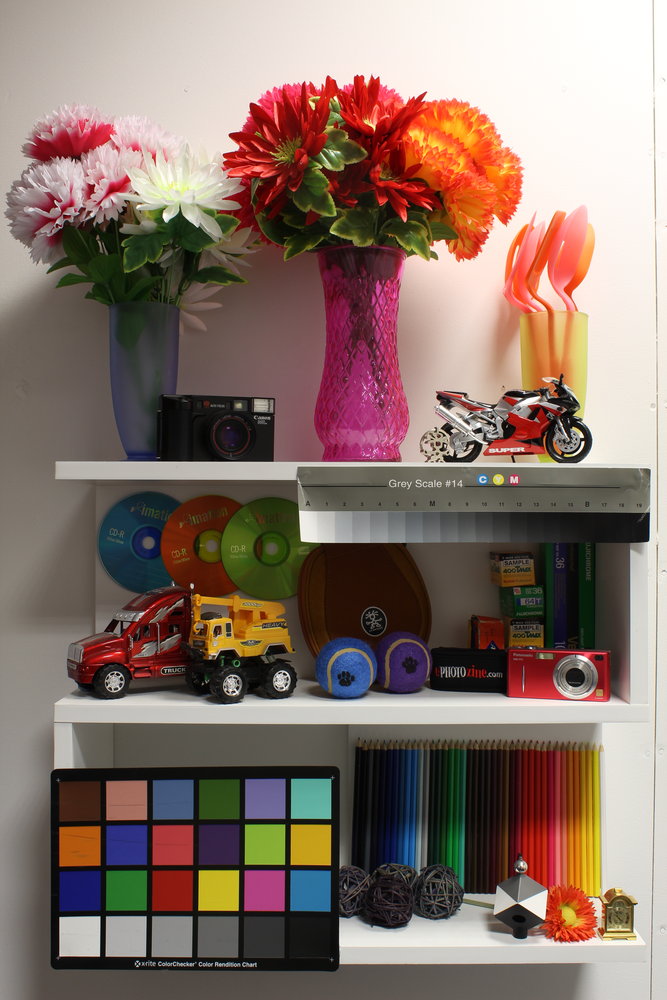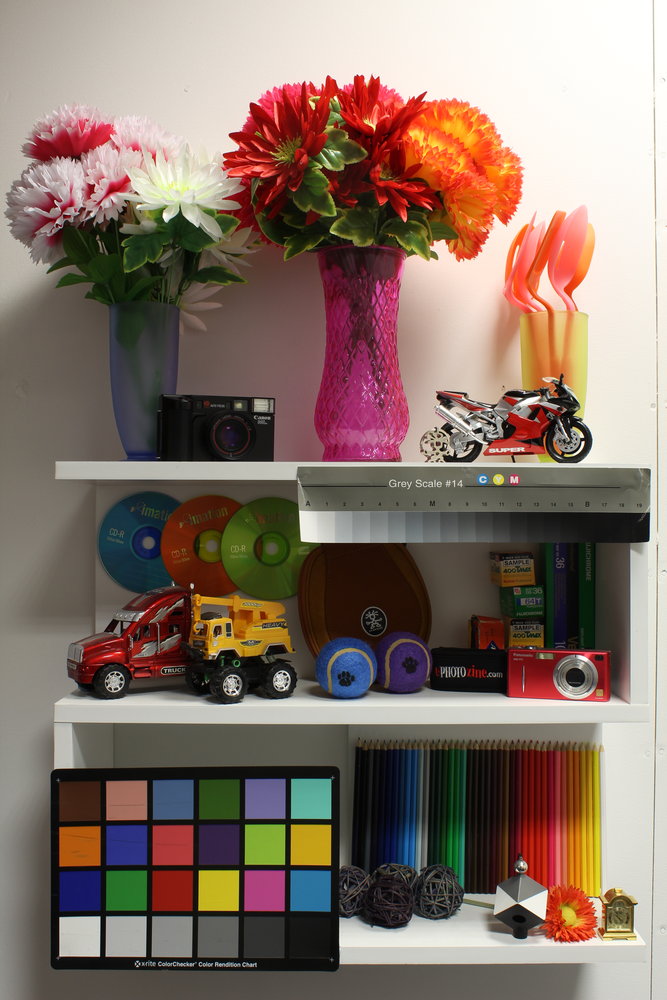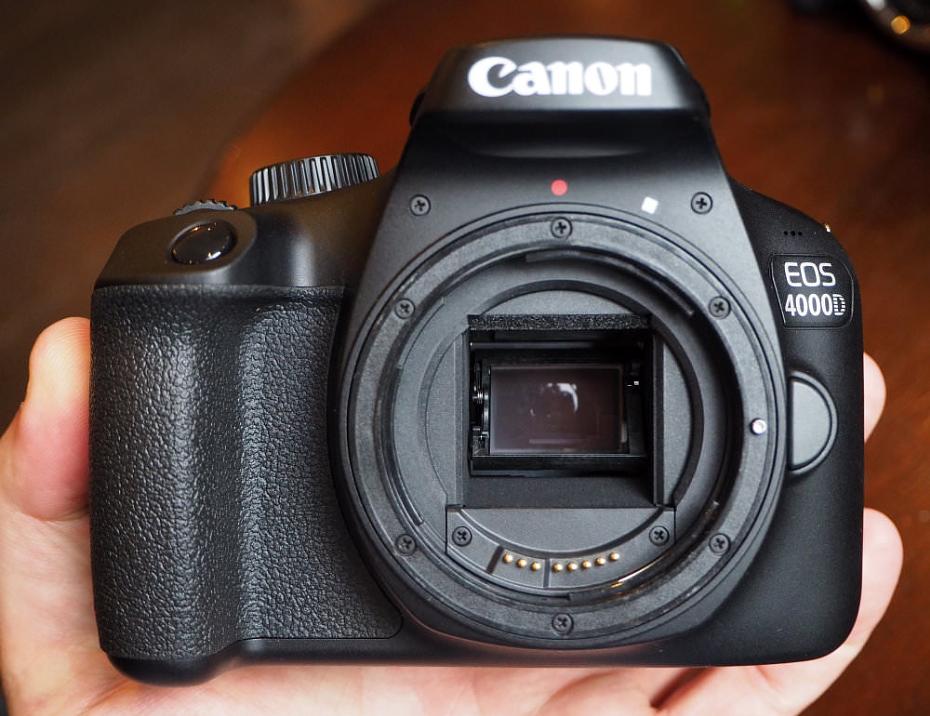
Quick Verdict
The Canon EOS 4000D replaces the 1300D, but with a lower specification and low-cost camera body. Unfortunately, the camera currently costs more than the model it replaces and there's little to like about the 4000D.
+ Pros
|
- Cons
|
The Canon EOS 4000D is Canon's new entry-level DSLR, sitting at the bottom of the range, designed to offer student photographers, or those on a budget, an affordable Digital SLR. The 4000D features an 18 megapixel APS-C CMOS sensor, and built-in Wi-Fi for transferring photos. The Canon EOS 4000D is available for £270 body only, or £360 with 18-55mm kit lens.
Canon EOS 4000D Features

The Canon EOS 4000D isn't available in the US, or Japan, where it would normally have a different name, such as Rebel, or Kiss.
The 4000D uses an 18 megapixel APS-C CMOS sensor, the same sensor found in the 1300D. The 4000D has 9 AF points and shoots at 3fps, less than the Canon EOS 600D, which we reviewed in 2011. The new Canon EOS 2000D is introduced as the upper entry-level camera, with a 24-megapixel APS-C CMOS sensor, more refined camera body, and built-in NFC.
The camera has full manual controls, as well as scene intelligent auto mode, and a number of creative effects. Built-in Wi-Fi makes the camera much more appealing for entry-level and younger shooters, which will make it quick and easy to connect to a compatible smartphone, transfer photos, as well as remotely control the camera.
On the back, there is a 2.7inch screen, with 230K dots. The camera supports live view, so you can use the rear screen to compose and shoot photos, if you don't want to use the optical viewfinder.
Continuous shooting speed is a rather sluggish 3fps, and the ISO range is the same as the 1300D, at ISO100 to ISO12800 (extended). The camera records FullHD video at 30,25,24fps, with mono sound, and there is no mic socket.
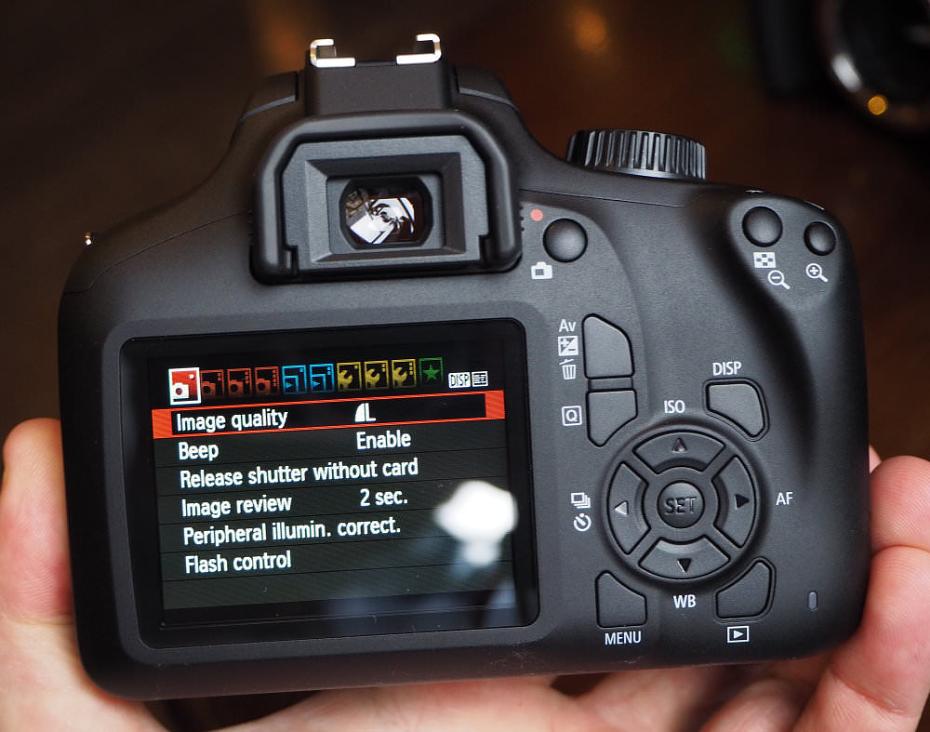
The Canon EOS 4000D has access to all of Canon's EF and EF-S lenses, and when combined with one of the prime lenses, it becomes a quite compact Digital SLR and for those that want the smallest possible Digital SLR system. If you're looking for a compact lens to go with the 4000D, then there are a number of compact prime lenses available, such as the 24mm f/2.8 STM pancake lens, 40mm f/2.8 STM pancake lens, and 50mm f/1.8 STM prime lens.
We've compared the Canon EOS 4000D to another Digital SLR from Canon, plus the next model up, the Canon EOS 2000D:
| Canon EOS 1300D | Canon EOS 4000D | Canon EOS 2000D |
| 18mp | 18mp | 24mp |
| 3inch screen, 920K | 2.7inch screen, 230K dots | 3inch screen, 920K |
| 0.80x OVF | 0.80x OVF (no dioptre) | 0.80x OVF |
| DIGIC 4+ | DIGIC 4+ | DIGIC 4+ |
| 1080p FullHD Video | 1080p FullHD Video | 1080p FullHD Video |
| ISO100 to ISO12800 | ISO100 to ISO12800 | ISO100 to ISO12800 |
| Wi-Fi / NFC built-in | Wi-Fi | Wi-Fi / NFC built-in |
| 3fps continuous shooting | 3fps continuous shooting | 3fps continuous shooting |
| 9 AF points | 9 AF points | 9 AF points |
| Auto pop-up flash | Manual pop-up flash | Auto pop-up flash |
| 500 shots | 500 shots | 500 shots |
| 485g inc battery and card | 436g inc battery and card | 475g inc battery and card |
| £329 with kit lens* | £369 with kit lens (non-IS) | £459 with kit lens (IS) |
* While still available.
The Canon EOS 4000D is available body only, or with the 18-55mm III kit lens (which does not feature optical image stabilisation). If you're likely to want to shoot in lower light conditions, or for those that want to record hand-held video, then a lens with Image Stabilisation (IS) is going to help under these shooting conditions.

Key Features
- 18 megapixel APS-C CMOS sensor
- Canon EF lens mount
- DIGIC 4+ image processor
- 2.7inch screen, 230k dot resolution
- 0.80x magnification, optical viewfinder
- Wi-Fi built-in
- FullHD 1080p video recording
- ISO100-ISO6400 expands to ISO12800
- 3fps continuous shooting
- 9 AF points
Canon EOS 4000D Handling
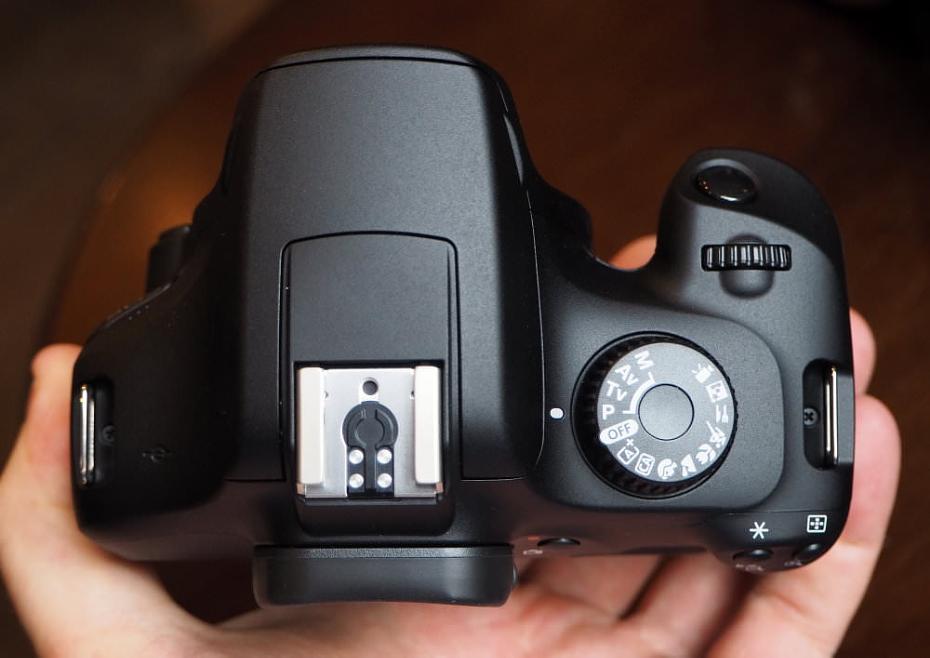
The finish on the plastic is very basic, in comparison to the 2000D, which has a more premium, slightly textured finish, with neater seams. You'll be able to see some of the main differences between the design and build quality of the two cameras in the photo below, where you can see that even the command wheel is made using a cheaper plastic dial on the 4000D. There is a rubber grip for your hand, but this does not continue to the back of the camera. The memory card slot can be found under the camera, in the battery compartment.
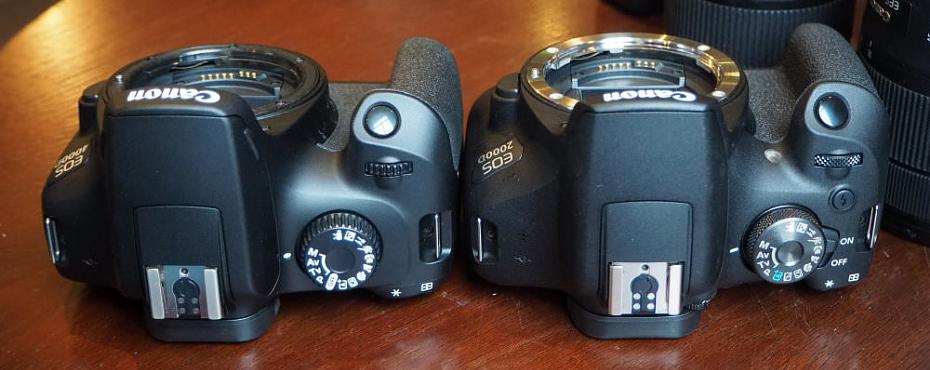
Canon EOS 4000D Vs 2000D (Right)
The mode dial is plastic, and is also used as the on/off switch, which makes the camera feel cheap. The layout of controls on the camera will be familiar to anyone who's used an entry to mid-level Digital SLR from Canon, such as the 1300D or 800D cameras.
The buttons are clearly labelled next to the buttons (instead of on the buttons), and longevity of the labels may become an issue over time. The buttons are a good size, with easy access to a number of useful settings, including ISO, AF, WB and Drive mode on the 4-way controller. With good controls and a rubber grip at the front, however, there is no rubber at the back for your thumb, and the plastic camera body can feel quite cheap in your hand.
There's also a plastic lens mount, this is likely to be an issue for some people, if you change lenses often, however, plastic can be quite strong, and plastic lens mounts have been used in the Sony Alpha A58 and A68. It's normally the mount or bayonet on the lens that breaks when a camera and lens are dropped, rather than the camera.
The shutter sound is quite loud and noticable. You can watch a video of this here.
The optical viewfinder has a soft rubber surround making it more comfortable to use. The optical viewfinder is clear and shows the focus points so that you know where the camera has focused. There are 9 focus points and these are quite central, which means you'll need to master focusing and re-composing if you want your subject off-centre. The optical viewfinder does not feature dioptre correction, so you'll need to look at another DSLR if you want this.
The pop-up flash must be pulled up manually if you want to be able to use the flash. On other Canon EOS DSLRs, the flash will automatically pop-up when activated.
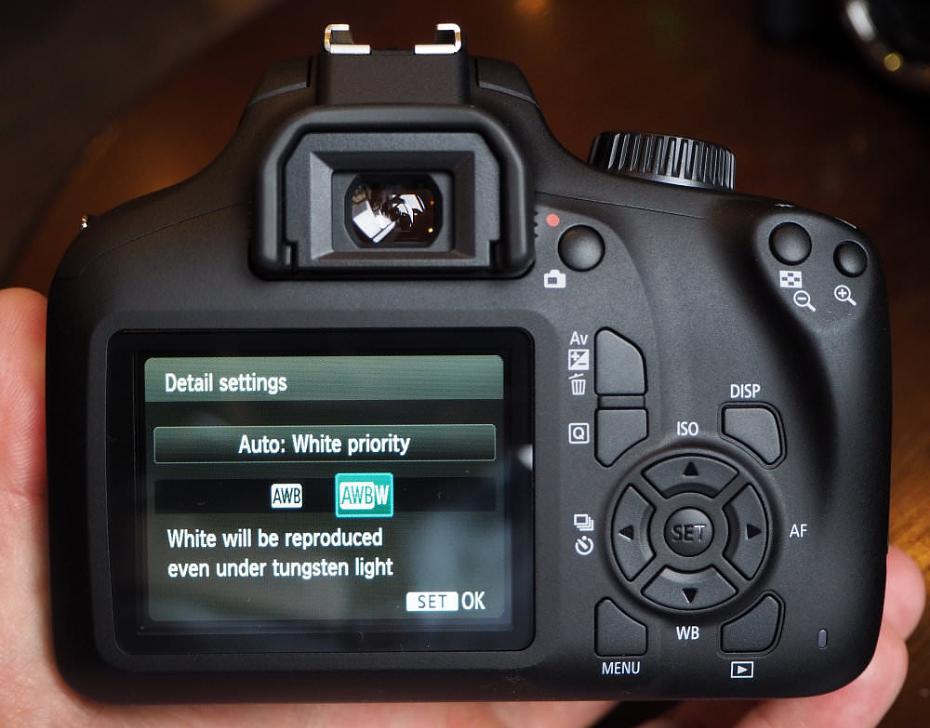
Menus – The menus on the 4000D are well designed and easy to use with each main section colour coded and the screen is clear and easy to read. Although unfortunately, it's not a gapless screen. There's a Q button to give quick access to controls on the rear screen so that you don't have to go into the menus.
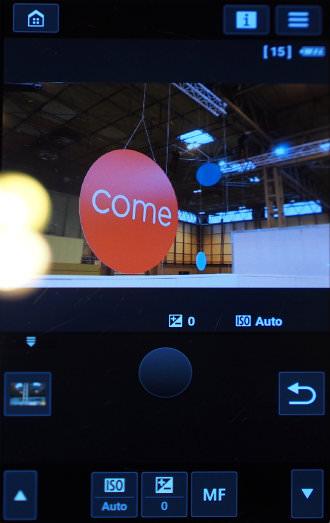 |
 |
Using Canon's Camera Connect app, (available for Android and iOS devices), you can view and transfer images on the camera, shoot remotely as well as change camera settings. The app will guide you through the steps needed to set up the connection.
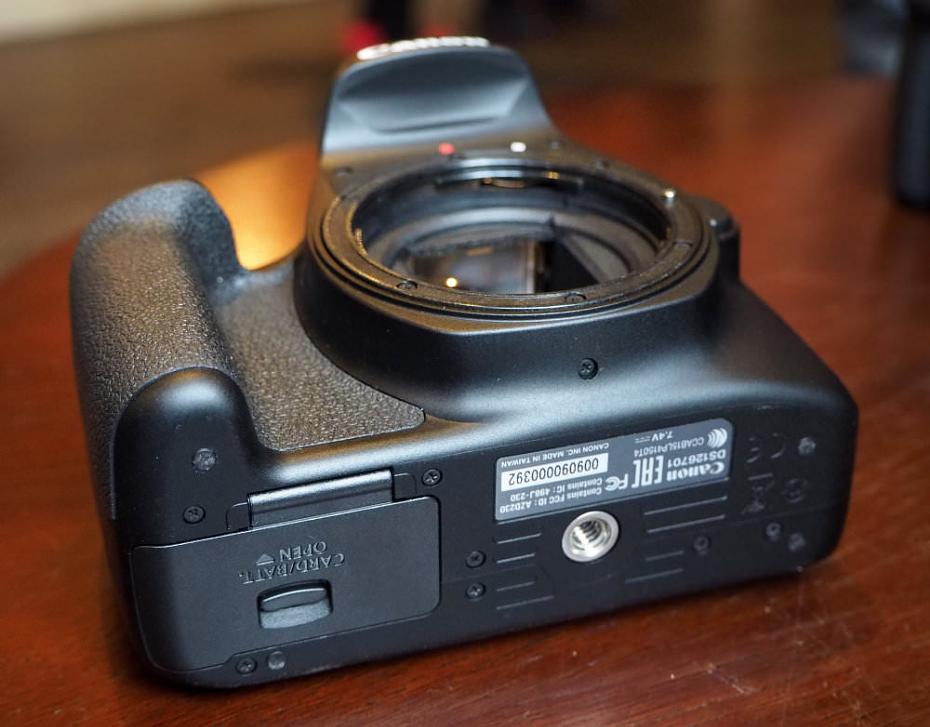
Battery life - Battery life is rated at 500 shots according to Canon / CIPA test results, which is reasonably good for a Canon Digital SLR, although other Digital SLRs sometimes offer longer battery life. The 4000D uses the LP-E10, the same as the 1300D and 2000D.
Canon EOS 4000D Performance
The performance section is where we look at the image quality performance of the camera. Additional sample photos and product shots are available in the Equipment Database, where you can add your own review, photos and product ratings.
Speed - We took a number of shots to test the camera's responsiveness, from switch on to first photo, shot to shot, focusing speed etc. We take a number of shots and then use the average to ensure accurate and consistent tests, making it easy to compare with other cameras.
| Shutter Response | <0.1secs - (same for live view) |
| Wide - Focus / Shutter Response | 0.15secs - live view: 1.85s |
| Full zoom - Focus / Shutter Response | 0.175secs - live view: 1.55s |
| Switch on Time to Taking a Photo | 0.4secs |
| Shot to Shot without Flash | 0.45secs |
| Shot to Shot with Flash | 0.6secs |
| Continuous Shooting - JPEG (shots before slow down) |
3fps (~) |
| Continuous Shooting - Flash | 2fps |
| Continuous Shooting - RAW | 3fps (9 shots) |
Focus and shot to shot times were both good, although the 3fps continuous shooting is looking a little dated, with competitors offering faster continuous shooting speeds. Tested with the EF-S 18-55mm lens. Live view focus remains horribly slow (taking up to 2 seconds to focus!), which makes it both frustrating and annoying to use.
Canon EOS 4000D Sample Photos
Sample Photos - As you would expect from a Canon camera, the images produced have very pleasing colour reproduction, with colours that are saturated, but not too saturated. Exposure is reliable, and there is a good level of dynamic range in photos, thanks to the Auto Lighting Optimiser (ALO) option. Unfortunately, there is no automatic HDR shooting mode. If there isn't enough dynamic range captured in your photos, then you'll need to process the raw files.
For better portraits, you're likely to want a brighter lens than the standard kit lens for softer, blurred backgrounds (with "Bokeh"), and lenses like the 50mm f/1.8 or 50mm f/1.8 STM (£92), would make an excellent second lens.
Lens Performance - Detail and sharpness of the 18-55mm III kit lens is average, with fairly disappointing focus performance, with more out of focus images than expected. Another problem with this lens, is that chromatic aberration is visible in a range of images, as well as ghosting and flare when there are bright sources of light in the frame (see the car park shot). The lens also lacks image stabilisation.
Peripheral illumination correction is available in the camera, based on whether there is data on the attached lens, but the camera doesn't offer as much correction as models higher up in the EOS range. This means that chromatic aberrations and purple fringing can often be seen, and will need correcting later in software if it annoys you.
Digital Filters - In playback there are options for Photobook Set-up and Creative Filters (Grainy B+W, Soft Focus, Fish-eye effect, Toy camera, Miniature). You can also use Creative Auto to apply a number of different effects, with the camera guiding you through the settings. Creative Auto shooting modes are: Standard, Vivid, Soft, Warm, Intense, Cool, Brighter, Darker, Monochrome.
Additional sample photos can be found in the Equipment Database.
Canon EOS 4000D ISO test images
ISO Noise Performance - Noise is well controlled up to and including ISO1600 and detail remains fairly good. At ISO3200 noise becomes more noticeable and colour saturation drops which means results are a little disappointing. Things get worse at ISO6400 and above with higher noise and random white dots in images. Unfortunately, there's little improvement in noise performance compared to the 1300D.
The ISO range is limited to ISO100 to ISO6400, which can be extended to ISO12800 (in Custom settings). This is quite limited compared to almost every other camera in this class, and even cameras with smaller sensors, which also give better noise performance.
Noise compared to the competition...
You would expect a higher resolution sensor to produce images with more noise, but you'd also hope that a newer generation sensor would produce cleaner images. Noise performance is no worse than the 18mp 1300D, but also no better, which is unfortunate, because the 1300D's noise performance wasn't particularly good.
If we compare the 4000D to the 2-year-old Nikon D3400 (24mp), the Nikon gives better noise performance. If we compare it to the nearly 4-year-old Sony Alpha A6000 (24mp), whilst the Sony gives softer results, it also gives images with significantly lower noise, particularly chroma noise.
Canon EOS 4000D White-balance test images
White Balance Performance - The camera has two options for auto white balance (AWB) one that retains ambient lighting conditions, and one that has a white priority. This option is designed to work under tungsten lighting, but also works with mixed lighting, and fluorescent lighting, so that you can choose what results you want, for example choosing warm results for portraits or white results for product shots. Thanks to this, it's possible to get very good results, even in mixed lighting.
Video - Video quality is good, recording FullHD at 1080p at 30, 25 or 24fps. You can also select from ISO100 to ISO6400 for movie shooting. The camera records mono sound, and there isn't a microphone socket on the camera. Video recording benefits from the use of a lens with image stabilisation, or alternatively a tripod or steady surface is recommended.
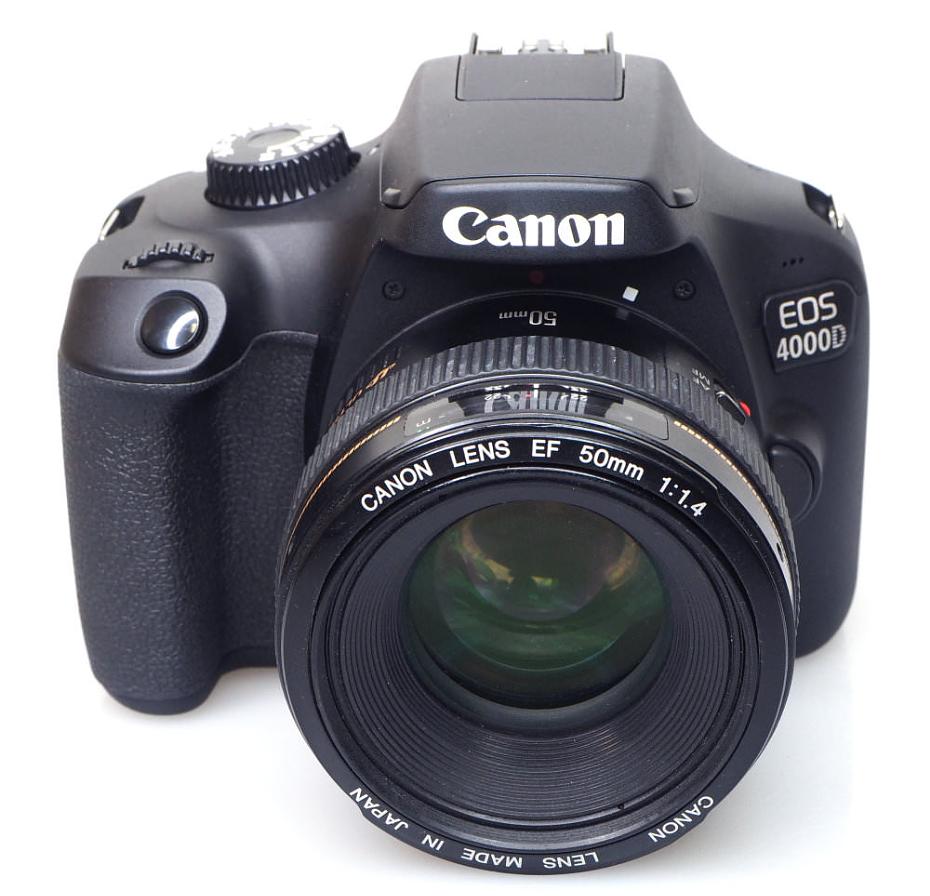
Value For Money
The Canon EOS 4000D is available for £270 body only, or £360 with 18-55mm kit lens, in comparison, the Canon EOS 1300D is £329 with kit lens (while stocks last) with image stabilisation (IS), which makes the 1300D excellent value for money. Alternatives to consider include the following entry-level DSLR cameras:
Canon EOS 2000D, 24mp, 3inch screen, 3fps, £459 with kit lens
Canon EOS 200D, 24mp, 3inch screen, 5fps, Mic socket, £559 with kit lens
Nikon D3400, 24mp, 3inch screen, 5fps, £355 with VR kit lens
Pentax K-S2, 20mp, 3inch vari-angle screen, weather resistant, 5.7fps, IS, Mic socket, £479 with kit lens
You could also look at the following mirrorless cameras with an electronic viewfinder (EVF), although these tend to have a higher price:
Fujifilm X-T100, 24mp, 3inch screen, 6fps, £619 with kit lens
Panasonic Lumix GX80, 16mp, 3inch screen, 4K video, £449 with kit lens
Panasonic Lumix G7, 16mp, 3inch vari-angle touch-screen, Wi-Fi, 8fps, 4K video, £499 with lens
Olympus OM-D E-M10 Mark III, 16mp, 3inch tilting touch-screen, Wi-Fi, 8.6fps, 4K video, £649 with lens
Fujifilm X-T10, 16mp, 3inch tilting screen, Wi-Fi, 8fps, £549 with lens
Sony Alpha A6000, 24mp, 3inch tilting screen, Wi-Fi, 11fps, £480 with lens
Canon EOS M50, 24mp, 3inch vari-angle touch-screen, Wi-Fi, 10fps, 4K video, £649 with lens
Have a look at more DSLRs in our Top 10 Best APS-C DSLR Cameras. You'll also need to buy a memory card and a case or bag to keep your camera safe and protected - have a look at our complete guide to camera bags.
Canon EOS 2000D Verdict
The Canon EOS 4000D is a minor downgrade to the EOS 1300D, offering fewer features, and lower specifications, so if you want a budget DSLR from Canon, then buy the 1300D while you still can. If the downgrade was reflected in the price, and the camera was £100 cheaper, then it could all be forgiven, however, it's currently more expensive than the 1300D.
Like the 2000D, it doesn't really matter which alternative camera you buy, it is going to be better, faster, and could be cheaper (or a similar price), and have newer features (like face detection, 4K video, or faster continuous shooting, more focus points, and better noise performance).
Sure the EOS 4000D is going to be the cheapest new DSLR you can buy today, but has the cost cutting gone too far? Alternatives from other manufacturers offer better value for money, better specifications, and sadly, there's very little reason to recommend the 4000D.
The 18-55mm lens performs quite poorly, with chromatic aberrations and ghosting, and the lack of image stabilisation puts it at a disadvantage compared to all other cameras, in fact, it's difficult to find a DSLR or ILC kit without image stabilisation of some kind!

